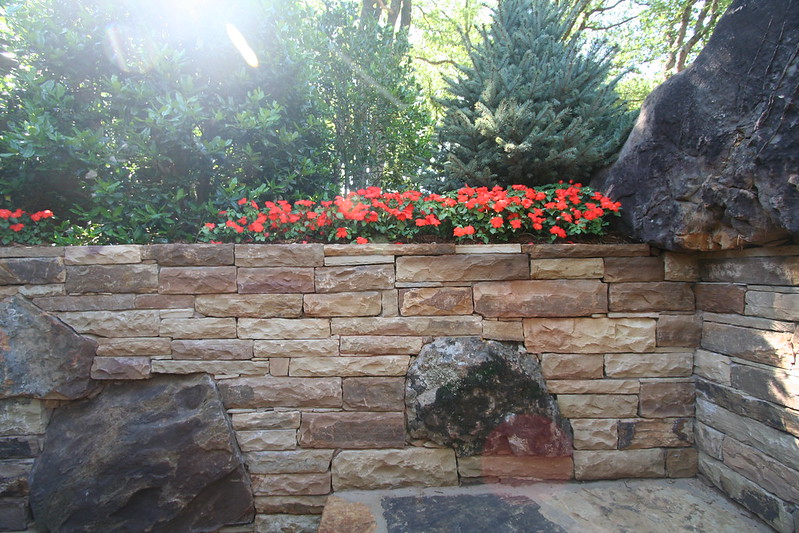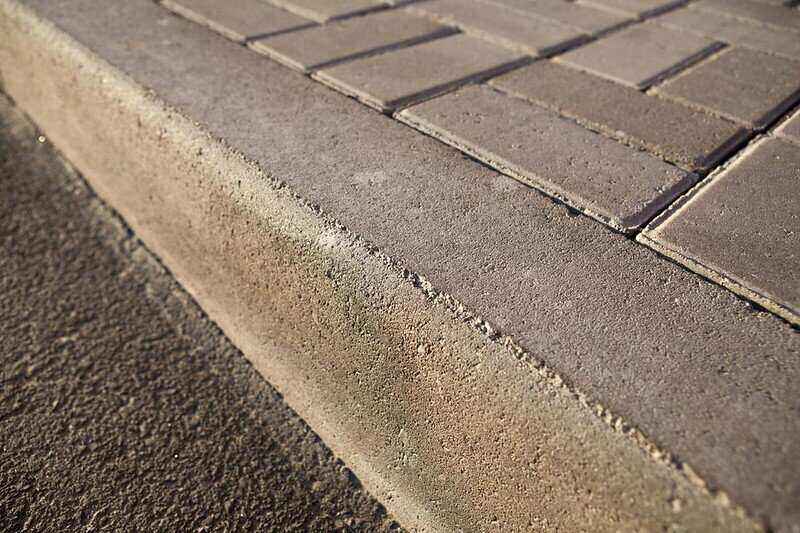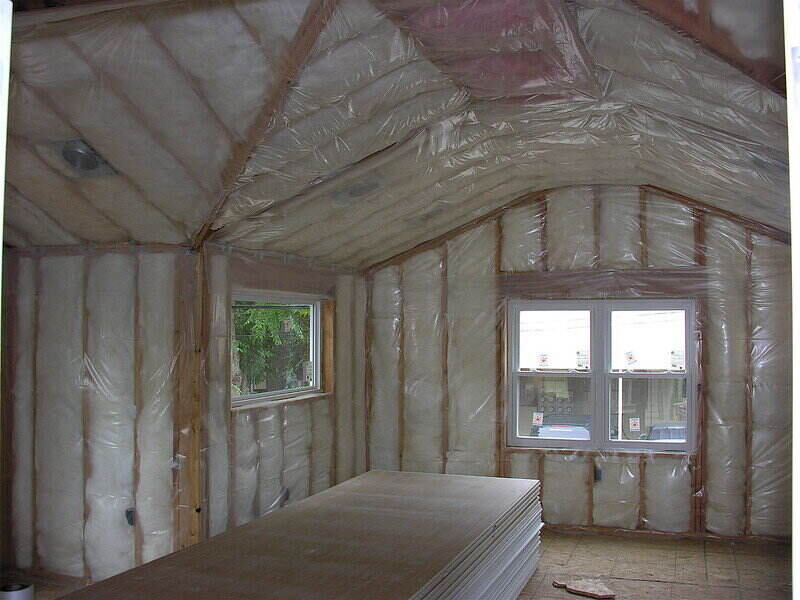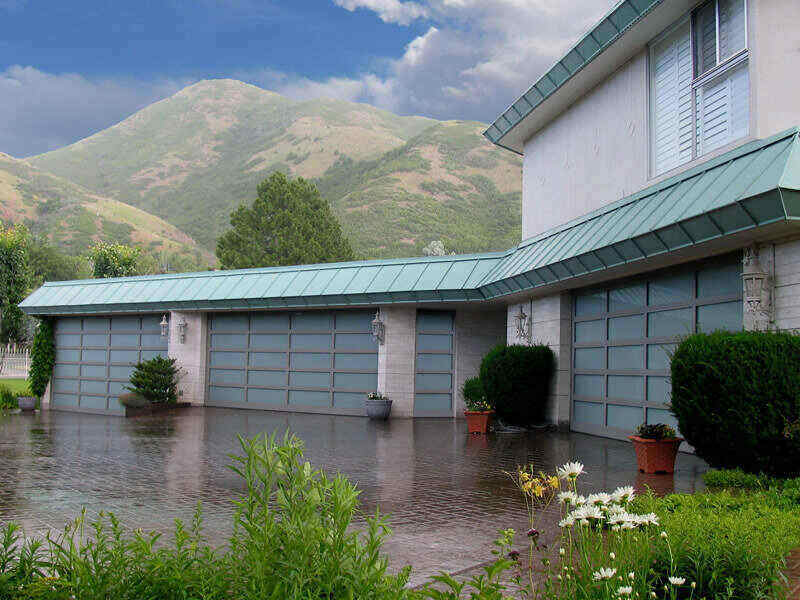Plan to spend around $7,320 for a fully installed new deck. The typical price range is $3,920 to $10,540. If you’re looking for something very small or at ground-level, you may pay as little as $1,600, while larger, more extravagant designs may run up to $17,000.
If you are planning a second-story deck, multi-level deck, or have complex design plans, count on paying toward the higher end of the average. If this seems too high for your budget, keep reading. DIY costs are significantly lower.
In this cost guide:
- Average Costs
- Cost Estimator by Size
- Other Factors That Affect Cost
- Related Services
- Pro Cost vs. DIY Cost
- Cost by Location
- FAQ
Average Costs to Build a Deck in 2025
| National Average Cost | $7,320 |
| Typical Price Range | $3,920 – $10,540 |
| Extreme Low End Cost | $1,600 |
| Extreme High End Cost | $17,000 |
The standard installation costs listed above include posts, framing, decking, a few stairs, and railing. The high-end cost represents more complicated projects (such as a second-story deck), while the low-end cost represents the simplest possible project built with the cheapest materials.
Cost Estimator By Deck Size
Decks typically cost about $30 per square foot on average. Keep in mind that some estimates top off around $55 per square foot and others cost as little as $15 per square foot (depending on the design of the deck and the materials used).
The costs in the table below were calculated using the average cost of $30 per square foot.
| Deck Size | Typical Cost |
| Small (144 sq. ft.) | $4,320 |
| Medium (320 sq. ft.) | $9,600 |
| Large (500 sq. ft.) | $15,000 |
Size and materials are two of the most influential pricing determinants for a deck. You don’t want to build too small and end up regretting the lack of space, but a hundred or so square feet more can mean thousands of extra dollars.
Other Factors That Affect Cost
Now that we’ve seen a bird’s-eye view of the total cost to build a deck, let’s break it down and look at a few variables to keep in mind when budgeting for your project:
Decking Materials
Decks can be made of several different materials, which means different material costs.
Below is a list of common decking materials and their average costs. These prices are for the decking materials only and do not include the cost of installation, railings, hardware, substructure, or other components.
| Material | Typical Cost (per sq. ft.) |
| Pressure treated wood | $2.00 – $3.75 |
| Composite | $8.20 – $13.30 |
| PVC decking | $7.50 – $11.50 |
| Cedar | $3.38 – $6.00 |
| Redwood | $5.50 – $19 |
| Exotic woods / Ipe | $9 – $16 |
While the prices listed here can’t tell you the total amount you’ll pay for your project, they can help you compare the relative costs of different materials so you can choose the best one for your budget. As you can see, composite material and high-end woods tend to be the most expensive options, while low-end woods like cedar and pine tend to be the cheapest.
Deck Style
Single-level platform decks are the standard style, and most of the costs discussed in this guide apply to this kind of project.
If you want something fancier, expect to pay more. Premium deck styles include:
- Multiple stories
- Wrap around decks
- Intricate designs
- Built-in seating
- Raised foundation
- Floating decks
- Roofed decks
Be prepared to pay close to $17,000, including materials and labor, for these premium deck styles.
Maintenance
Depending on the material you choose, your deck may need maintenance over time, which can add to the long-term cost.
- Lowest maintenance cost: A composite deck requires much less maintenance than an average wood deck: just a little soap and water or a light pressure-wash a couple of times a year. In addition, most composite decking materials come with material and labor warranties.
- Highest maintenance cost: With pressure-treated wood decks, you’ll need to pressure-wash, clean, sand, and apply a stain and sealer every year or two. The frequency depends on your climate, the condition of your deck, and product wearability. Be sure to add the cost of a pressure washer to your budget.
Preparation
Before the deck building begins, you may have to budget for these services to prepare the site:
- Taking down and disposing of an existing deck
- Clearing land
- Leveling ground
The cost to clear land is usually about $1.18 to $2 per square foot, while the cost to level uneven ground is typically charged by how many hours of work it takes, at an average rate of $40 to $50 per hour.
Extras
Many homeowners are willing to pay extra for these add-ons:
- Furniture: Most homeowners purchase new furniture for their deck. This ranges from about $100 for a simple two-chair bistro set to several thousand dollars if you are outfitting a very large deck with multiple sectionals, dining tables, and lounge chairs.
- Electricity: If you want your deck to have lights or electrical outlets, the necessary wiring will cost extra. Electricians typically charge $45 to $100 per hour, and electric DIY kits typically cost $30 to $120.
- Fire pit: There are many advantages to having a fire pit in your outdoor living space, including cooking and warmth. A prefabricated fire pit typically costs about $200, but expect a custom-built fire pit to cost at least $2,500.
- Privacy screen: When you add privacy screens, what happens on your deck stays on your deck. Screens can also help keep out bugs. Expect to pay about $20 per panel for a privacy screen.
- Lighting: Lighting will enhance your safety and allow you to enjoy your deck in the evening. The average landscape lighting package will range from about $1,670 to $3,000.
Related Services
Here are a few other services to consider while you’re renovating your outdoor living space:
Pergola Installation
Pergolas are another great way to improve your outdoor space and curb appeal. Pergolas typically cost $3,000 – $12,000, but prices vary depending on size, style, and materials.
Landscaping
Many homeowners opt to install flower beds around their newly built decks. Measure the area around the deck to find the square footage and budget for $4 to $14 per square foot for the cost of landscape bed installation.
Roof or Awning
Adding a roof or awning to your deck can go a long way in protecting it from the elements. Roofing costs range from $2,500 up to $10,000, depending on the size and roofing material.
Awnings are typically a cheaper option, depending on the type. The cost of having an awning installed by a professional ranges from around $1,345 to $4,075.
Gravel Driveway
While you’re upgrading your backyard with a new deck, you can also upgrade your front yard with a new driveway – it’s more affordable than you’d think! The average gravel driveway costs about $1,500 on average, including installation. Many homeowners opt for gravel because it looks great and costs much less than asphalt or concrete.
Greenhouse
Don’t want your plant collection to crowd your new deck? Consider giving your plants their own outdoor living space by installing a greenhouse. Greenhouses typically cost about $11,000 for professional installation, but a DIY kit costs less than half of that at about $4,000. The final cost of a greenhouse depends on size, materials, and style.
Pro Cost vs. DIY Cost
If you’re an advanced DIYer and want to brush off your power tools to begin a new home improvement project, building a deck should be well within your reach. YouTubers have reported building simple, pressure-treated pine decks in the 8′ x 10′ range for under $1,000 in materials, including concrete mix, nails, screws, and other fasteners.
Please see equipment prices in the table below.
| Equipment | Typical Cost |
| Tape Measure | $18 |
| Level | $35 |
| Hammer | $18 |
| Speed Square | $7 |
| Clamps | $6 |
| Sawhorses | $30 |
| Mixing paddle | $14 |
| Personal protective equipment | $50 |
| Power Sander | $70 |
Please see heavy equipment rental costs in the table below.
| Equipment | Daily Rental Fee |
| Post hole digger | $10 |
| Circular saw | $23 |
| Table saw | $53 |
| Miter saw | $35 |
| Air compressor | $53 |
| Pneumatic nail gun | $29 |
| Impact driver | $25 |
A small 8’ x 10’ DIY deck will cost under $1,000 in materials, plus the cost of equipment (if you don’t already own everything you need) and building permits (if they’re required in your area). Equipment rental fees can add up quick, so you might not save as much money as you’re expecting if you don’t own your own power tools.
If you rent all the heavy equipment for just one day, and you have to buy all the other necessary equipment, you’ll spend about $1,500 total to build your new deck.
How to Build a Deck DIY in 10 Steps
Here are the basic steps to building a deck:
Step 1: Get a copy of your local building code and HOA requirements.
Step 2: Create, download, or purchase your blueprint. Be sure to consider any design extremes you may need to plan for, including extra weight (hot tubs, for example), slope, and so forth, that may affect your deck design planning.
Step 3: Contact your tax assessor’s office and insurance company for details on how your deck may affect your tax bill or insurance premium.
Step 4: Apply for a permit, if necessary. Call your building department to ask if you need to bring plans with you as part of the application process. Ask about the inspection schedule. For decks, you may need multiple inspections.
Step 5: Call 811 before you dig to find out where your underground utility lines are located.
Step 6: Recruit at least one friend to help you.
Step 7: Prepare the site, removing sod or grass.
Step 8: Build the deck, following required building codes and inspection schedules.
Step 9: Pass all of your inspections.
Step 10: Enjoy more time outside with family and friends!
Cost of a Deck By Location
Deck costs vary depending on where you live. Local price factors include the following:
- Taxes: A new deck may affect your property taxes. Contact your local tax office before you settle on a final design plan.
- Material costs: Materials are cheaper when they are available locally. If you don’t have redwood trees in your area, for example, know that you will pay more for this material than someone who lives on the West coast.
- Insurance premiums: First, be sure to hire an insured contractor to build your deck so you won’t be liable for accidents or injury. Second, contact your homeowners insurance company before building to see if the new addition will be covered and if your homeowners’ insurance rates will increase. Insurance rates and policies vary by location.
- Permits: Most decks will require a permit, but small ground-level decks may not. Permits usually depend on the deck size and location. You may be responsible for an application fee, as well.
FAQ
Here are our top tips to save money on your new deck:
• Consider a low or ground-level deck. These decks or “wooden patios,” as some call them, do not require railings, stairs, or extensive substructures. You may not need a permit to build one, either.
• Scale down the size of your deck. This is a tricky one, because, as one builder noted, none of his customers wished for a smaller deck in hindsight. However, a smaller deck can save you a lot in material and labor costs. Think carefully about your purpose for building the deck and your budget to come up with a wallet-friendly solution.
• Use local materials. Local costs less because you don’t have to pay for transportation from too far away.
• Remember maintenance costs. Pressure-treated pine might sound great right now because it costs so much less upfront than other decking materials, but you’ll have to re-seal and re-stain or re-paint the wood every one or two years. Those costs can add up in the long run, especially if you hire a professional to do the painting or staining.
That depends. For natural wood, wait until spring or anytime during the warm season. Some contractors who work with composite materials say that winter is a good time since they are less busy in the off-season.
There are many things to consider here:
• How do you want to use your deck, and how many people should it be able to acoomodate? For a large deck, you might consider cheaper materials to mitigate costs.
• Is your climate extreme, with very cold winters or very hot summers? Some materials may not do well in heat or cold.
• Is your property flat or sloped? Is the ground uneven? Does it have any other obstacles or oddities? Depending on the lay of the land, a standard deck may not be an option for you. You may need a raised deck, which can cost a lot more.
Once you’ve taken all these things into consideration, call a local contractor (or maybe just a construction-savvy friend) to help determine what size and structure are best for your needs.
Expect to pay about $12,000 for a 20×20 deck (including material and labor costs). Prices can vary based on materials and style, but most 20×20 decks cost $6,000 to $22,000.
Yes, studies have shown that a deck adds value to your home. Your ROI will vary depending on location and the curb appeal of your deck, but most homeowners see about 75% ROI.
Final Thoughts
Decks are great for outdoor living and the resale value of your home. Although fancier styles can get pricey, building a traditional deck doesn’t have to break the bank. Contact deck builders near you to find the perfect deck within your budget.
Michelle Selzer contributed to this article.
Main Photo By: Wonderlane / Flickr / Public Domain




